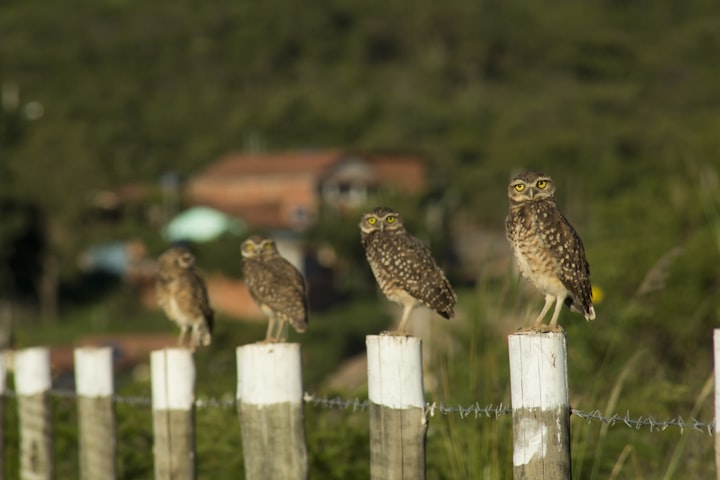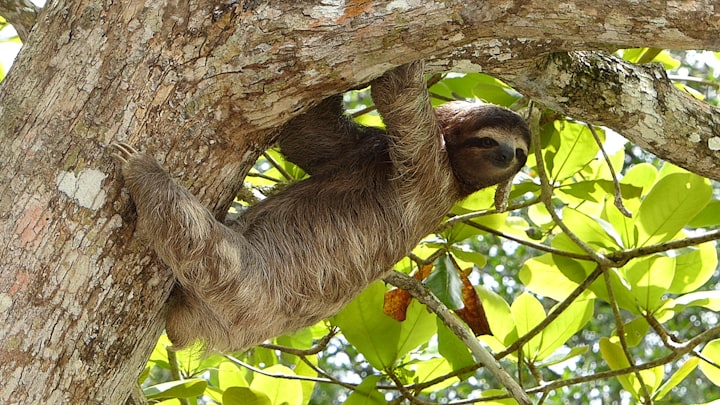
Owls: The Night-time Hunters
Owls are fascinating creatures that are known for their large, forward-facing eyes, sharp talons, and hooting calls. They are nocturnal birds of prey that have captivated humans for centuries with their mysterious and elusive nature. In this article, we will take a closer look at the world of owls, their physical characteristics, habitat, behavior, and why they are so important to the ecosystem.
Physical Characteristics
Owls are unique birds that have a distinctive appearance. They have a round face, a hooked beak, and two large, forward-facing eyes that give them excellent vision in low light conditions. Their eyes are so large that they cannot move them, so they must turn their entire head to look around. This is facilitated by their neck, which has a greater number of vertebrae than most other birds, allowing them to rotate their heads up to 270 degrees.
Owls have powerful talons with sharp claws that they use to catch their prey. They also have soft, fluffy feathers that allow them to fly silently, making them efficient hunters. Owls come in a variety of sizes, with the smallest species, the Elf Owl, measuring just 5 inches in length, and the largest species, the Eurasian Eagle Owl, measuring up to 30 inches in length.
Habitat
Owls are found all over the world, except for Antarctica. They live in a variety of habitats, including forests, deserts, tundras, and grasslands. Different species of owls have adapted to their specific environments, with some living in trees, others in burrows, and still others in rocky crevices. Most owls are nocturnal and are active at night, while some species, such as the Northern Hawk Owl, are diurnal and hunt during the day.
Behavior
Owls are solitary birds that are usually seen alone or in pairs during the breeding season. They are generally territorial and defend their territory from other owls. Owls are carnivorous and primarily feed on small mammals such as rodents, rabbits, and shrews. They also eat birds, reptiles, and insects. Owls are able to digest their prey whole and regurgitate the indigestible parts, such as fur and bones, in the form of pellets.
Owls have a unique way of communicating with each other through hooting calls. Each species of owl has a distinct call, which they use to communicate with other owls in their territory. They also use calls to attract mates and to defend their territory. The hooting call of the Great Horned Owl is one of the most recognizable owl calls and is often used in movies and television shows.
Importance to the Ecosystem
Owls are important predators in the ecosystem and play a crucial role in controlling the populations of their prey. Without owls, the populations of rodents and other small mammals would increase rapidly, leading to an imbalance in the ecosystem. Owls are also an indicator of the health of their environment, as they are sensitive to changes in their habitat and prey availability. As such, they serve as a barometer for the health of the ecosystem.
In addition to their ecological importance, owls have also played an important role in human culture for centuries. They have been featured in mythology and folklore in many cultures around the world, and are often associated with wisdom, mystery, and magic.
conclusion
In conclusion, owls are an incredible species of bird that have captured the attention and curiosity of humans for centuries. Their distinctive physical features, habitat, and behavior make them one of the most fascinating creatures on the planet. They play a vital role in the ecosystem, serving as important predators and indicators of environmental health. As humans, we have much to learn from these enigmatic creatures, and we should continue to work towards their conservation and protection for future generations to appreciate and admire.






Comments
There are no comments for this story
Be the first to respond and start the conversation.